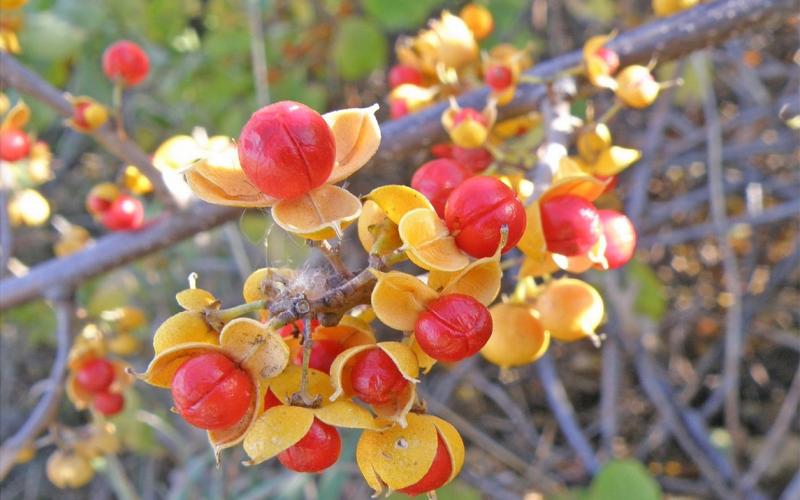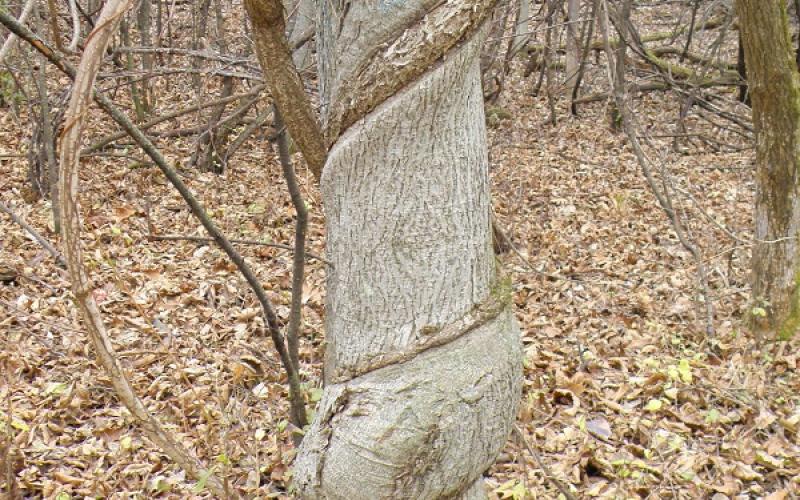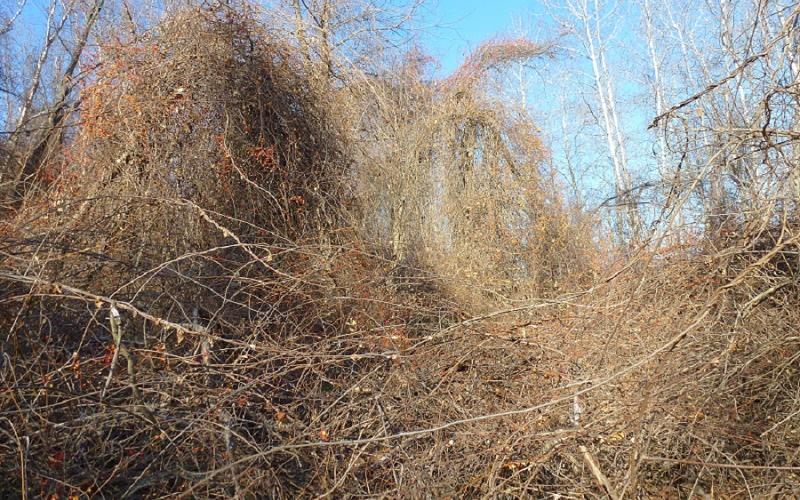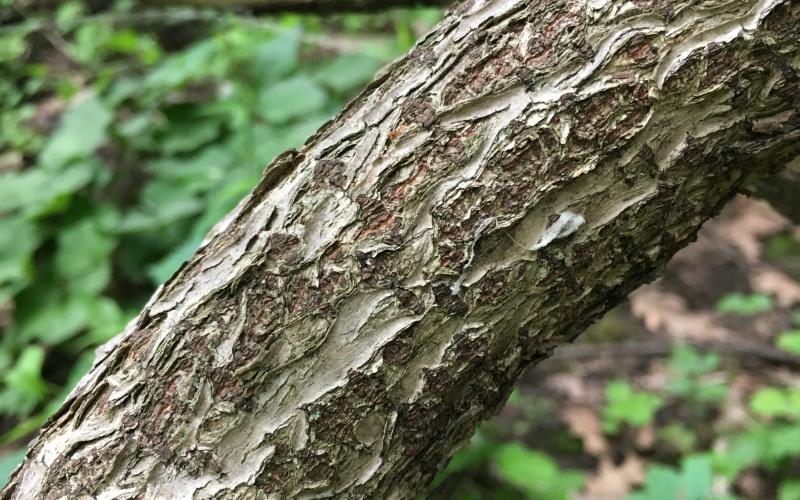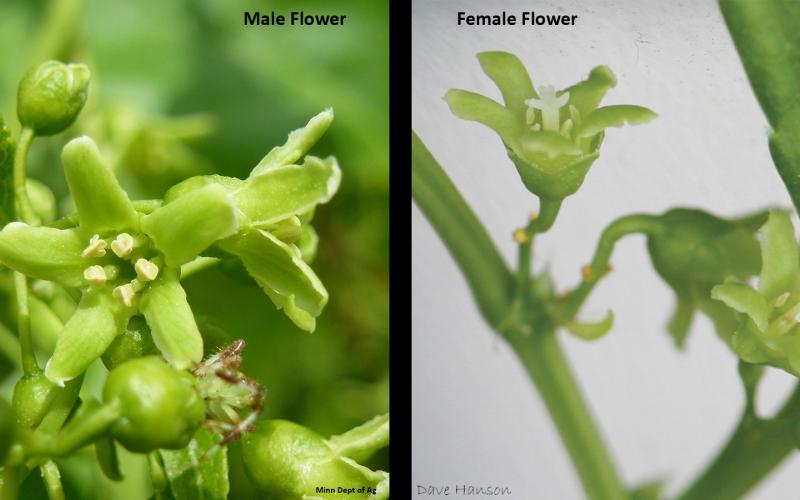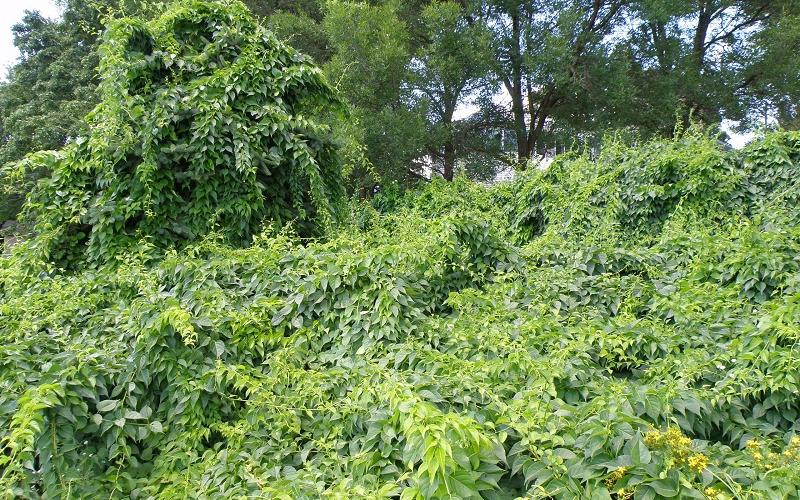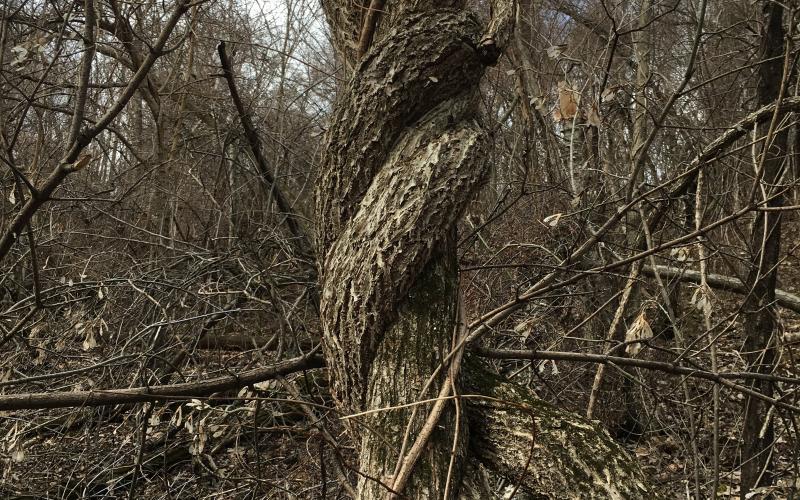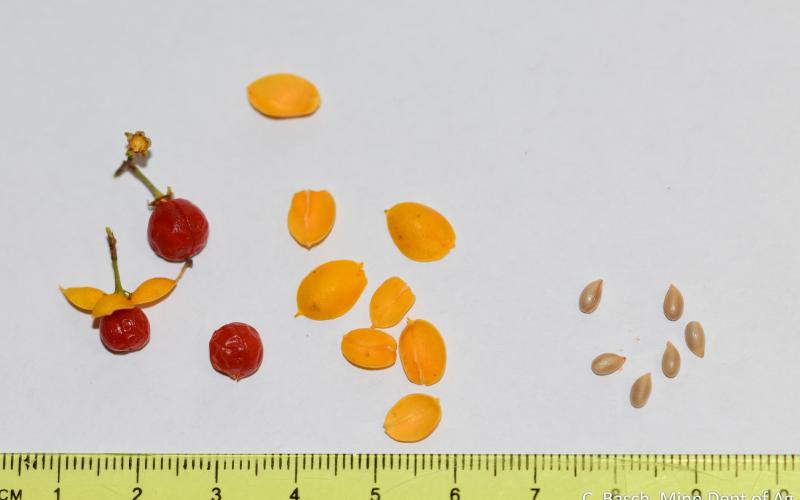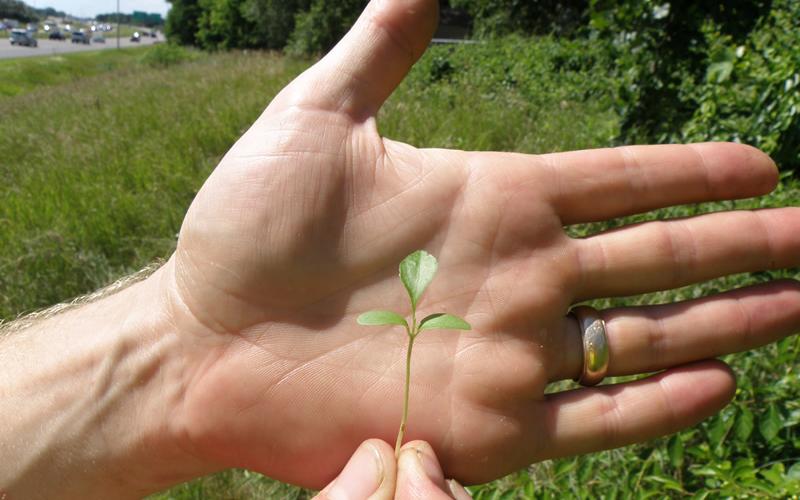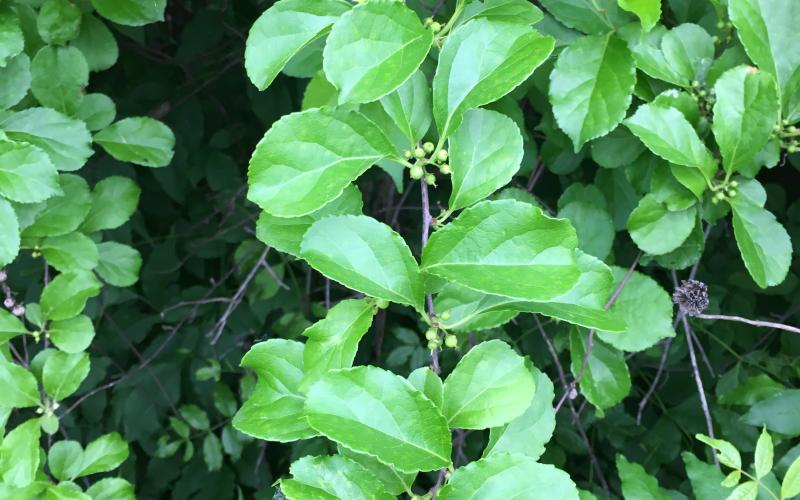Common Name: Round leaf bittersweet
Scientific Name: Celastrus orbiculatus Thunb.
Alternate Names: Oriental bittersweet, Asian bittersweet, climbing spindleberry
Related Species: C. scandens (native)
Legal Status
Efforts must be made to prevent seed maturation and dispersal of plants into new areas. Additionally, no transportation, propagation, or sale of these plants is allowed. Failure to comply may result in enforcement action by the county or local municipality.
Background
Round leaf bittersweet is a woody vine that is native to China, Korea, and Japan. It was introduced to North America in the mid-1860s as an ornamental. Round leaf bittersweet has since spread throughout the temperate eastern US and Canada. In the mid-1900s, many people promoted the use of Round leaf bittersweet for its hardiness and showy fruit which contributed to its popularity as an ornamental vine.
Description
- The vines girdle and smother trees and shrubs.
- Deciduous vine that grows up to 66' long. The vines climb by winding around a tree or other support structure. There are whitish, raised lenticels on the vine.
- The leaves are green then turn yellow in the fall. They are alternate and vary in shape from oblong to almost round. Leaf size is also variable from 2- 5" long to 1.4- 2" wide. The leaf margins have rounded teeth.
- There are separate male and female plants. Flowering occurs in the spring and flowers are arranged in clusters of 2- 7 at the leaf axils. Each flower has 5 petals and 5 sepals. Pollen on male flowers is white.
- Fruits are round and change in color from green to bright red with a yellow capsule as they mature. Typical female plants can produce up to 370 fruits which ripen in the fall.
Habitat
Round leaf bittersweet is found in forested areas, field and forest margins, meadows, rights-of-way, fence rows, along waterways and in residential landscapes. This plant thrives in a range of soil types and light levels from full sun to shade.
Means of spread and distribution
Round leaf bittersweet reproduces by seeds and rhizomes. The fruits are consumed, then dispersed by birds and mammals; ingested seeds have a higher germination rate than seeds that fall to the ground. People can move seed by using fruiting stems in flower arrangements. Round leaf bittersweet is sometimes mistakenly labeled and sold by nurseries and in garden centers as American bittersweet.
Impact
Round leaf bittersweet vines twine around trees and other supports resulting in girdled and smothered trees and shrubs. Entire plant communities may be overwhelmed by Round leaf bittersweet. The added weight of the vines covered with snow and ice can break trees and shrubs. Round leaf bittersweet outcompetes and displaces our indigenous American bittersweet to the point that Connecticut now lists the formerly common American bittersweet as a species of concern.
Prevention and management
- Avoid spreading round leaf bittersweet by learning to recognize it and not planting it. Do not collect or use the fruiting stems for ornamental purposes. Remove all infestations from your property. Bag or burn all fruit for disposal.
- For all management options, infested sites will need to be monitored and treated repeatedly until the seedbanks are depleted.
- Foliar or cut stump herbicide applications can be effective. For specific herbicide recommendations, check with your local University of Minnesota Extension personnel, co-op, or certified landscape care expert. There are several businesses throughout the state with certified herbicide applicators that can be hired to perform chemical applications.
- Regular, weekly mowing will control round leaf bittersweet, but less frequent mowing may result in suckering from the roots.
